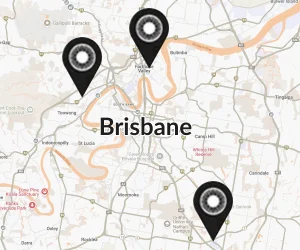
What are the main causes of myopia and how can it be treated?
Myopia is short-sightedness. It means far objects look blurry while close objects stay clear. It is very common today. Many people notice it when they struggle to see road signs, classroom boards, or screens at a distance. If this sounds like you, you are not alone. Myopia now affects millions of people across the world.
It can feel frustrating. It can make simple things feel harder. And for many people, it starts early and slowly gets worse over time. The good news is that myopia is well understood. We know what causes it. And we have safe and effective ways to correct it so you can see clearly again without glasses or contacts.
Why does myopia happen?
Myopia starts when the eye grows a little too long. Light then focuses in front of the retina instead of on it. The retina is the “camera sensor” of the eye. When light lands in the wrong spot, things look fuzzy.
There are three main reasons this can happen.
1. Family history
Myopia often runs in families. If one or both parents are short-sighted, it increases your chance of getting it too. This does not mean you are guaranteed to develop it. But it does mean your eyes may be more sensitive to other triggers like close-up work.
Doctors call this a “genetic risk”. But think of it more simply. Your eyes may behave like your parents’ eyes.
2. Long hours of near work
Modern life involves a lot of screen time. Phones. Tablets. Laptops. Reading up close for long periods makes the eye focus at a short distance for hours at a time. Over time, this leads the eye to adapt to that short range. That shift increases the chance of myopia starting or progressing.
This is one reason myopia has risen so quickly. Our daily habits have changed. We spend less time outdoors and more time indoors on screens.
3. Less time outdoors
Spending time outside seems to protect the eye from myopia. Bright outdoor light sends signals that help the eye grow in a healthy way. Studies show that children who spend more time outside have a lower risk of developing myopia.
Even adults benefit from breaks outdoors. Natural light helps the eyes relax after long hours of close-up focus.
Other factors that may play a role
These are not major causes, but they can add to the risk:
- Low light when reading
- Holding screens very close
- Poor sleep
- Not taking breaks during near work
Myopia forms slowly. Small habits every day shape how the eye grows.
How is myopia diagnosed?
Myopia is simple to diagnose. A basic eye exam checks how clearly you see distant objects. If things are blurry, your eye care team may do more tests to measure your prescription and look at the health of the eye.
Most adults know they have myopia when they get tired of squinting at a distance. Or when they start relying more and more on their glasses or contacts.
If you’re unsure whether you are short-sighted or whether your vision can be corrected, a quick exam tells you everything you need to know.
How can myopia be treated?
There are several ways to correct myopia. The right choice depends on your age, lifestyle, and goals.
Below are the most common options.
1. Glasses
Glasses are the simplest way to fix short-sightedness. They bend light so it lands on the retina again. This clears up distance vision.
Glasses work well. But they can feel inconvenient. They fog up. They slide down. They limit side vision. And many people do not enjoy the feeling of being dependent on them every day.
2. Contact lenses
Contact lenses sit on the eye and correct the focus. They give clear vision without frames. Many people enjoy contacts for sport, exercise, or social events.
But contacts can irritate dry eyes. They can cause infections if not used carefully. And they still require daily handling, cleaning, and replacement.
3. Laser eye procedures (LASIK and PRK)
These procedures reshape the cornea. The cornea is the clear front window of the eye. By reshaping it, light focuses on the retina again. This gives clear distance vision without glasses or contacts.
These procedures are safe and predictable for most adults with stable prescriptions. They take only minutes. Most patients notice a big improvement very quickly.
Because this is an elective procedure, people often feel nervous. That is normal. But it is also one of the most studied medical procedures in the world. In most cases, it offers strong results and a fast recovery. It helps people get back to daily life without the hassle of glasses or contacts.
4. Lens replacement
Some adults with very high myopia or age-related lens changes are better suited to lens replacement. This is a procedure where the natural lens inside the eye is removed and replaced with a clear artificial one.
Lens replacement is similar to cataract surgery. In fact, cataract surgery is a type of lens replacement. The procedure removes the cloudy lens that forms with age. It is the only way to treat a cataract.
Lens replacement helps people who want clear vision without glasses but are not ideal candidates for laser eye procedures. It also prevents cataracts in the future.
Which treatment is right for you?
Choosing the right treatment depends on:
- Your age
- Your prescription
- The shape of your eye
- Your corneal thickness
- Your lifestyle
- Whether your vision is stable.
Some people are ideal for a laser procedure. Others may benefit more from lens replacement. And some may prefer to stay with glasses or contacts.
A suitability test is the first step. It gives you simple answers about what your eyes can safely achieve.
Can myopia get worse?
Yes. Myopia often progresses, especially in younger people. Long hours of near work, screens, and little outdoor time can speed this up.
But once your prescription stabilizes in adulthood, it usually stays steady. This is why many adults choose to correct it. They want to stop relying on glasses or contacts. They want clear, open vision again.
Living with myopia vs correcting it
Living with myopia can feel limiting. You may:
- Miss details at a distance
- Depend on lenses
- Struggle in the rain
- Lose glasses
- Feel tied to cleaning routines
- Avoid activities because of your vision.
Correcting myopia can feel freeing. You wake up and see. You move without thinking about lenses. You feel more confident and capable.
If you have been living with blurry vision for years, it is normal to feel unsure about taking the next step. But many people say the same thing: they only wish they had asked sooner.
Ready to learn what your eyes can do?
You deserve to see your world clearly and simply. If you want to know whether your eyes are suitable for a laser procedure or lens correction, start with a quick check.
ARE YOU SUITABLE?
Check your laser eye surgery suitability online with our free LASIK self-test
OUR MOST POPULAR PROCEDURES

Hi, I’m Dr. Matthew Russell, a laser and cataract surgeon
HI I’M DR. MATTHEW RUSSELL A LASER EYE AND CATARACT SURGEON
With over 15 years of experience, I enjoy the privilege of helping patients of all ages reclaim clear vision or preserve it for as long as possible.
Vision correction and high-precision cataract surgery hinge on the expertise and skill set of the provider who also has access to the most precise tools for the job. Ophthalmic surgeons like me know how to make treatment safe, comfortable and positive for the patient. They know how to minimise the risk of complications and maximise successful outcomes.
I have a passion for helping my patients enjoy the clear, high-definition vision they need to live rich and active lives. Now, I have hand-picked a team of professionals that share my passion and commitment to exceptional care.
Dr. Matthew Russell
MBChB, FRANZCO






